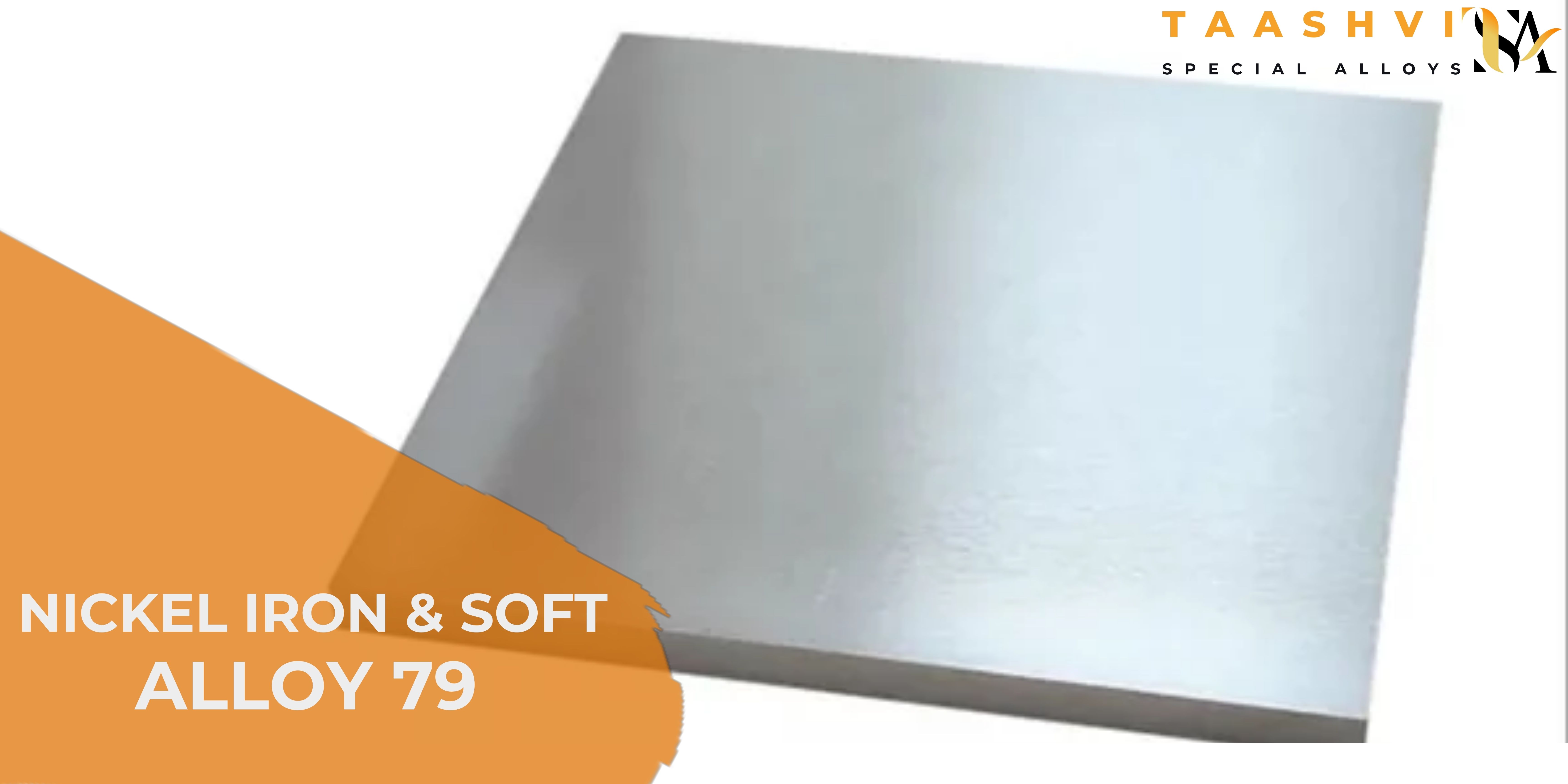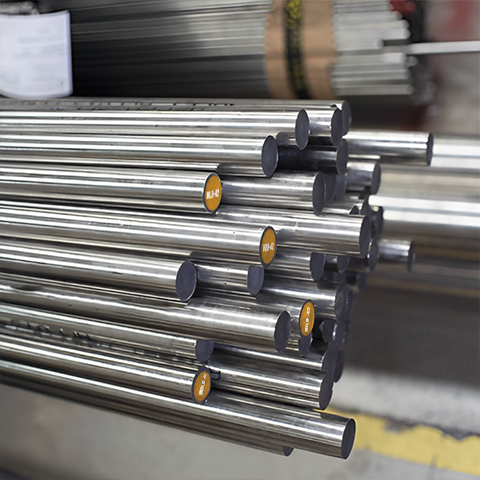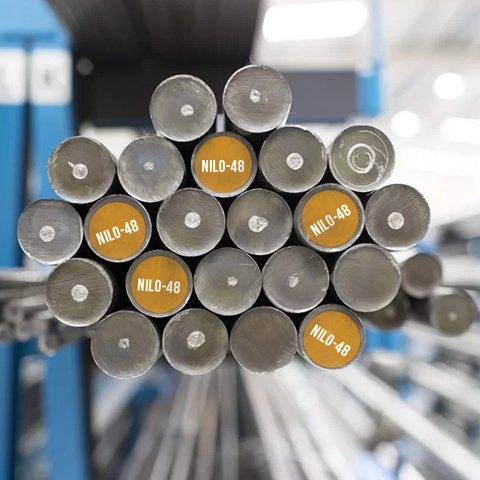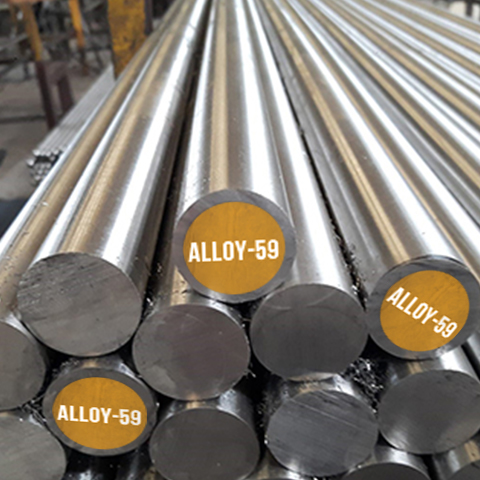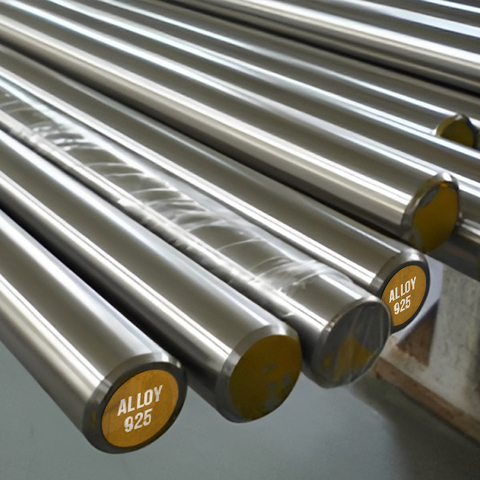- Alloy 79
- EFI Alloy 79
- Mu-Metal
- HyMu® 79,
- Moly-Permalloy
- Nickel Iron Alloy
- Alloy 79 Soft Magnetic Alloys
- ASTM A753 Type 4
- Magnifer 7904
- Permalloy 79
Alloy 79 by Taashvi Special Alloys
In the field of advanced alloys, Taashvi Special Alloys' ALLOY 79 is a benchmark due to its remarkable mechanical characteristics and strong resistance to corrosion. This innovatively and precisely crafted alloy serves a variety of industrial sectors, such as aerospace, automotive, and manufacturing, providing unmatched performance and dependability in demanding environments. The following main ideas emphasize the importance of Alloy 79:
Key Points:
01 Higher Strength Mechanically: Because of its exceptional mechanical strength, alloy 79 is the best option for applications that call for toughness and longevity.
02 High Corrosion Resistance: Because of its exceptional mechanical strength, alloy 79 is the best option for applications that call for toughness and longevity.
03 Temperature Stability: Alloy 79 preserves structural integrity in high-temperature environments thanks to its exceptional stability.
04 Versatile Applications: Because of its adaptability, this alloy finds broad application in a wide range of industries, including chemical processing, oil and gas equipment, and aircraft components.
05 Precision Engineering: Taashvi Special Alloys has mastered the production process, guaranteeing ALLOY 79's exact composition and reliable quality.
06 Innovation and Research: In order to maintain Alloy 79's position at the forefront of cutting-edge alloy technology, ongoing innovation and research endeavors are being made to broaden its uses and improve its qualities.
Alloy 79 Round Bar | Rod Inventory Ready-to-Ship

Taashvi (Taashvi) is the leading global distributor of Taashvi Alloy 79 (UNS N14080) round bar and rod. A highly magnetic nickel-iron-molybdenum alloy, we stock this material in 12 ft random lengths. Our diameters range from 0.625 inches to 2.000 inches. We supply round bar in stress relief annealed and centerless ground for machining.
Taashvi Alloy 79 soft magnetic round bars are manufactured to meet ASTM A753 and MIL N 14411C specifications.
Stock items are ready-to-ship within 24-hours of your order confirmation. Your order can be cut-to-length on our CNC band saws and shipped to your destination .
Below please find a sampling of our standard stock items. Our inventory fluctuates based on market demands. If you do not see the size or form you require, we ask that you call us for current product availability.
| Material | Form | Size Inches | SKU Number |
|---|---|---|---|
| Taashvi Alloy 79 | Round Bar | Rod | 0.187” | Taashvi79-RD-1875 |
| Taashvi Alloy 79 | Round Bar | Rod | 0.250” | Taashvi79-RD-250 |
| Taashvi Alloy 79 | Round Bar | Rod | 0.312” | Taashvi79-RD-3125 |
| Taashvi Alloy 79 | Round Bar | Rod | 0.500” | Taashvi79-RD-500 |
| Taashvi Alloy 79 | Round Bar | Rod | 0.625” | Taashvi79-RD-625 |
| Taashvi Alloy 79 | Round Bar | Rod | 0.750” | Taashvi79-RD-750 |
| Taashvi Alloy 79 | Round Bar | Rod | 1.000” | Taashvi79-RD-1.000 |
| Taashvi Alloy 79 | Round Bar | Rod | 1.500” | Taashvi79-RD-1.500 |
| Taashvi Alloy 79 | Round Bar | Rod | 2.000” | Taashvi79-RD-2.000 |
Taashvi Alloy 79 Sheet Annealed

Taashvi is the leading distributor of Taashvi Alloy 79 sheets in the annealed condition (aka Magnifer 7904). Our sheet forms are available from stock in sizes 30″ x 120″ long. Select your sheet thickness from our diverse sizes that start at 0.010″ and range to 0.125″.
For the past 35 years, Taashvi has partnered with VDM Metals GmbH, the premier global manufacturer of soft magnetic alloys. VDM Metals
manufacturers this alloy under their trade name of Magnifer® 7904 while we call this alloy Taashvi Alloy 79. VDM Metals produces the alloy with the tightest chemical and physical properties which are manufactured to exceed the magnetic expectations of ASTM A753 and Mil N 14411C.
Taashvi in-house capabilities include our state-of-the-art water jet. Save time and money by letting us cut your blanks! Sheets can be sheared to your specifications for immediate shipment via UPS, DHL or FedEx.
Below please find a sampling of our standard stock items. Our inventory fluctuates based on market demands. If you do not see the size or form you require, we ask that you call us for current product availability.
| Material | Form | Size Inches | SKU Number |
|---|---|---|---|
| Taashvi Alloy 79 | Sheet Annealed | 0.010” | Taashvi79-SH-010 |
| Taashvi Alloy 79 | Sheet Annealed | 0.014” | Taashvi79-SH-014 |
| Taashvi Alloy 79 | Sheet Annealed | 0.020” | Taashvi79-SH-020 |
| Taashvi Alloy 79 | Sheet Annealed | 0.025” | Taashvi79-SH-025 |
| Taashvi Alloy 79 | Sheet Annealed | 0.030” | Taashvi79-SH-030 |
| Taashvi Alloy 79 | Sheet Annealed | 0.040” | Taashvi79-SH-040 |
| Taashvi Alloy 79 | Sheet Annealed | 0.050” | Taashvi79-SH-050 |
| Taashvi Alloy 79 | Sheet Annealed | 0.062” | Taashvi79-SH-062 |
| Taashvi Alloy 79 | Sheet Annealed | 0.125” | Taashvi79-SH-125 |
Taashvi Alloy 79 Strip Coil Annealed (aka HyMu® 80, Magnifer 7904®, Moly-Permalloy)

Taashvi Alloy 79 Strip Coil Stock
Taashvi wants to be your leading supplier of Taashvi Alloy 79 strip/coil, a soft magnetic alloy also known under these trade names: HYMU 80®, Magnifer 7904®, Moly-Permalloy. Taashvi Alloy 79 is available from our stock in strip coil form in the annealed condition. Our inventory ranges in thicknesses from
0.004″ to 0.020″ and is listed in the table below.
All thicknesses of Taashvi Alloy 79 can be slit to width based upon your required size. Our in-house services include state-of-the-art equipment to cut your order to size and a skilled team to service your material needs. Talk to the sales team about your project requirements, so we can ensure you are provided with all of our capabilities that are designed to save you time and money.
| Material | Form | Size Inches | SKU Number |
|---|---|---|---|
| Taashvi Alloy 79 | Strip | Coil Annealed | 0.004" | Taashvi79-CO-004 |
| Taashvi Alloy 79 | Strip | Coil Annealed | 0.006" | Taashvi79-CO-006 |
| Taashvi Alloy 79 | Strip | Coil Annealed | 0.010" | Taashvi79-CO-010 |
| Taashvi Alloy 79 | Strip | Coil Annealed | 0.014" | Taashvi79-C0-014 |
| Taashvi Alloy 79 | Strip | Coil Annealed | 0.020" | Taashvi79-C0-020 |
Taashvi Alloy 79 Applications

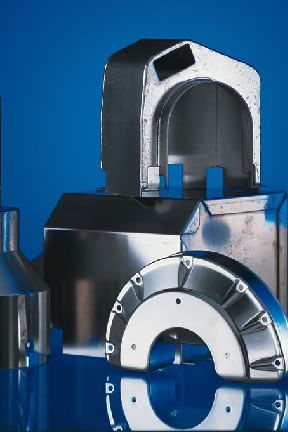
Taashvi Alloy 79 also known as Magnifer® 7904 is appropriate for applications requiring material properties that exhibit extremely high initial, maximum permeability and minimum hysteresis. The alloy has been useful in miniature transformers and other applications where small size and low weight are important.
Typical applications of Taashvi Alloy 79 are:
- Electro-magnetic shielding
- GFI cores
- High quality motor laminations
- Specialty transformer lamination
- Steering magnetics found in particle accelerators
- Stepping motors
- Toroidal tape wound cores
Taashvi Alloy 79 Properties

Taashvi recognizes that proper material selection is very important for the long term success of engineering applications. With this in mind, the properties of Taashvi Alloy 79 are provided below to assist in your evaluation. Within these tables you will find the typical AC and DC magnetic properties for this soft magnetic alloy. The typical physical, mechanical and chemistry data along with specifications are also included as a guide in your analysis.
Taashvi Alloy 79 is a nickel-iron-molybdenum alloy that is beneficial for conditions where extremely high initial and maximum permeability is needed with minimum hysteresis.
Taashvi Alloy 79 Typical DC Magnetic Properties |
|
|---|---|
| Sheet & Strip | |
| Permeability at 4 mT (40 G), min. | 55,000 |
| Permeability at 10 mT (100 G), min. | 70,000 |
| Maximum Permeability, min. | 250,000 |
| Coercive Field Strength A/m (Oe), max.* | 1.2 (0.015) |
| *The coercive field strength is determined from a maximum magnetic flux density of 0.5 T (5kG) | |
| Source: ASTM A753, Table 4, Alloy Type 4, Sheet and Strip (0.020 < d < 0.060 in.) | |
Taashvi Alloy 79 Typical AC Magnetic Properties | |||
|---|---|---|---|
| 60-Hz AC Magnetic Requirements | |||
| Source: ASTM A753, Table 5, Alloy Type 4, UNS N1 4080, Thickness 0.51 mm / 0.020 in. | |||
Taashvi Alloy 79 Typical Physical Properties | ||
|---|---|---|
| Density | g/cm3 | 8.74 - 8.79 |
| Curie Temp | °F | 734 |
| °C | 390 | |
| Melting Range | °F | 2650 |
| °C | 1454 | |
| Electrical Resistivity | ohm-cir mil/ft | 349 |
| Microhms-cm | 58 | |
| Thermal Conductivity | BTU-in/sq. ft-hr- °F | 134 |
| W/cm • K | 0.32 | |
| Mean Specific Heat | BTU/lbm- °F | 0.1180 |
| J/Kg • K | 494 | |
| Thermal Expansion | ppm / °F (75°F to 842°F) | 7.5 |
| ppm / °C (25°C to 450°C) | 13.6 | |
| Source: ASTM A753, Table X1.1, Alloy Type 4, (Annealed) | Carpenter Electrification HyMu “80®” Data Sheet v. 5/20 | ||
Taashvi Alloy 79 Typical Mechanical Properties | ||
|---|---|---|
| Ultimate Tensile Strength | ksi | 84 |
| MPa | 580 | |
| Yield Strength | ksi | 32 |
| MPa | 220 | |
| Elongation | % in 2 in. | 40 |
| Hardness | HR15T | 86 |
| HV 1000 | 160 | |
| Source: ASTM A753, Table X1.3, Alloy Type 4, Mill Annealed Strip w/max. thickness of 0.100 in. | ||
Taashvi Alloy 79 Chemistry | ||
|---|---|---|
| Carbon, max | 0.05 | |
| Manganese, max | 0.80 | |
| Silicon, max | 0.50 | |
| Phosphorus, max | 0.02 | |
| Sulfur, max | 0.01 | |
| Chromium, max | 0.30 | |
| Nickel | 79.0-82.0 | |
| Molybdenum | 3.5-6.0 | |
| Cobalt, max | 0.50 | |
| Copper, max | 0.30 | |
| Iron* | Balance | |
| *Iron is the balance by difference. Quantitative analysis of this element is not required. | ||
| Source: ASTM A753 Table 2, Alloy Type 4, UNS N14080 Chemical Requirements | ||
Taashvi Alloy 79 Specifications | ||
|---|---|---|
| ASTM A753 Type 4 | MIL N-14411C | UNS N14080 |
Taashvi Alloy 79 Ferromagnetic In-Process and Hydrogen Annealing
Taashvi Alloy 79 (HyMu 80®) Heat Treatment
In-Process Anneal
- To relieve all strains and restore the Taashvi Alloy 79 (HyMu 80®) to a soft condition suitable for drawing, spinning, forming, bending or similar operations, anneal at 1450°/1850°F (788°/1010°C} for not more than one hour.
- Taashvi Alloy 79 (HyMu 80®) are high-nickel, high permeability alloys that will easily absorb contaminants, such as carbon, oxygen, and sulfur from combustion furnaces gasses. In-process annealing should be conducted in dissociated ammonia, hydrogen, vacuum or inert gas atmospheres.
Ferromagnetic Standard Hydrogen Annealing
- To achieve maximum softness including optimum magnetic and electrical properties, Taashvi Alloy 79 (HyMu 80®) should be annealed in an oxygen-free, dry hydrogen atmosphere with a dew point below -40°F (-40°C) at 2050°/2150°F (1121°/1177°C) for two to four hours. Furnace cool to 1100°F (593°C). From 1100° to 700°F (593° to 371°C) cool at a rate between 350° to 600°F (194° to 334°C) per hour.
- All oil, grease, lacquer and any other contaminants must be removed prior to annealing.
- Separate individual parts by an inert insulating powder (magnesium and aluminum oxide) during hydrogen annealing.
- Vacuum heat treating can be employed. Usually, there is some small sacrifice in magnetic properties compared to heat treating in a dry hydrogen atmosphere.
Machining Guide Iron-Nickel Alloys and Commercially Pure Nickel
The information and data presented are typical or average values and are not a guarantee of maximum or minimum values. Applications specifically suggested for materials described herein are made solely for the purpose of illustration to enable readers to make their own evaluation and are not intended as warranties, either expressed or implied.
Characteristics
This group of alloys is not hardenable by heat treatment. They can be made harder through cold working only. For these alloys the annealed hardness is generally in the range of RB 70/80, whereas the 1¦4 H to 1¦2 H range for this group of metals can run between RB 80/96. Material in the annealed condition will be more difficult to machine because it is soft and gummy. Tools tend to plow the metal instead of cutting into it and do not easily form chips. Surface scale oxide is tightly adherent and penetrates the surface to a greater extent than stainless steels. Machining is considerably improved by descaling the material. If there were standard machinability ratings applied for this series of alloys, Alloy AISI-B-1112 being measured as 100%, the following percentages could be suggested for these chemistries:
- Alloy 48, Taashvi Alloy 50 — 40%
- Invar® FM — 60%
- Kovar® (ASTM F15 ) — 40%
Coolant
It is important to control heat buildup, the major cause of warpage. Suggested coolants are Keycool 2000 or Prime Cut. Whatever lubricant is used for machining, it should not contain sulphur. Sulphur can effect the performance of many sealed electronic parts.
Tooling
- T-15 Alloy, such as Vasco Supreme – Manufactured by Vanadium Alloys Company
- M-3 Type 2, such as Van Cut Type 2 – Manufactured by Vanadium Alloys Company. Congo – Manufactured by Braeburn.
For machining with carbide tools, a K-6 manufactured by Kennametal, Firthite HA manufactured by Firth Sterling, or #370 Carboloy could be used, or a K2S manufactured by Kennametal, or a Firthite T-04 manufactured by Firth Sterling would be satisfactory. One thing of prime importance is that all feathered or wire edges should be removed from the tools. They should be kept in excellent condition by repeated inspection.
Turning
If using steel cutting tools are used, try a feed of approximately .010″ to .012″ per revolution and a speed as high as 35/FPM could probably be attained. Some of the angles on the cutting tools would be as follows:
| End cutting edge angle | Approximately 7° |
| Nose radius | Approximately 0.005" |
| Side cutting edge angle | Approximately 15° |
| Back rake | Approximately 8° |
| Side rake | Approximately 8° |
When cutting off, high speed tools are better than carbide tools, and a feed of approximately .001″ per revolution should be used. The cutting tools should have a front clearance of about 7° and a fairly big tip – larger than 25° would be helpful.
Drilling
When drilling a 3/16″ diameter hole, a speed of about 40/FPM could possibly be used, and the feed should be about .002″ to a .0025″ per revolution, for a 1/2″ hole, approximately the same speed could be used with a feed of about .0040″ to .005″ per revolution. The drills should be as short as possible and it is desirable to make a thin web at the point by conventional methods. By conventional methods, we mean do not notch or make a crank shaft grind. It is suggested that heavy web type drills with nitrided or electrolyzed surfaces be used. The hole, of course, should be cleaned frequently in order to remove the chips, which will gall, and also for cooling. The drill should be ground to an included point angle of 118° to 120°.
Reaming
Reaming speeds should be half the drill speed, but the feed should be about three times the drill speed. It is suggested that the margin on the land should be about .005″ to .010″, and that the chamfer should be .005″ to .010″ and the chamfer angle about 30°. Tools should be as short as possible and have a slight face rake of about 5° to 8°.
Tapping
In tapping, a tap drill slightly larger than the standard drill recommended for conventional threads should be used, because the metal will probably flow into the cut. It is suggested that on automatic machines, a two or three fluted tapping tool should be used. For taps below 3/16″, the two fluted would be best. Grind the face hook angle to 8° to 10°, and the tap should have a .003″ to .005″ chamfered edge. If possible, if binding occurs in the hole in tapping, the width of the land may be too great, and it is suggested that the width of the heel be ground down. Again, it is suggested that nitrided or electolyzed tools be used. Speed should be about 20/FPM.

